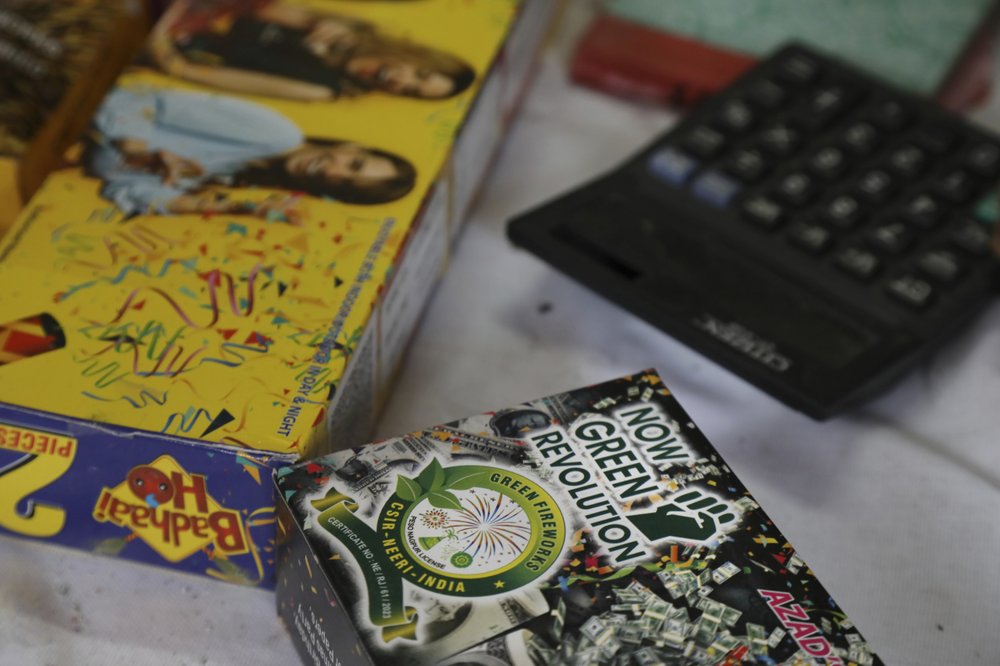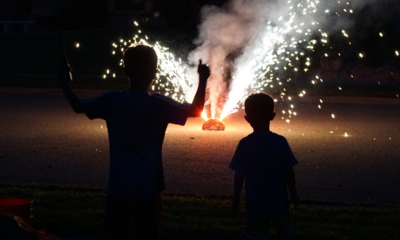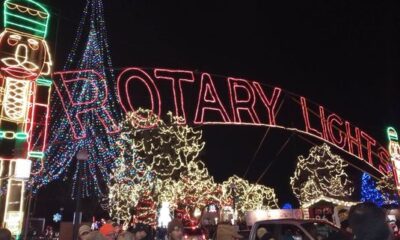World
India hopes ‘green’ fireworks, light show dim Diwali impact

NEW DELHI (AP) — India hopes to temper the environmental damage from its biggest annual holiday on Sunday with low-emission firecrackers and light shows, but the plan’s uneven rollout has hurt some businesses and proven difficult to enforce.
Diwali, the Hindu festival of lights, is typically celebrated by setting off firecrackers late into the night with friends and family, compounding already-hazardous air quality levels in northern India as farmers illegally burn crop stubble to clear fields.
In response to a petition filed on behalf of three infants, India’s Supreme Court issued a landmark ruling in October 2018 that banned conventional firecrackers and enforced a two-hour limit for setting them off — an order that many people flouted last year, contributing to toxic smog blanketing New Delhi the following day.
This year, firecracker sellers say business has dropped significantly.
“My business has been hit a lot, it’s down by about 70%,” said Dhanraj Jain, who has been selling firecrackers in Old Delhi for eight years. He said the “green” crackers cost as much as double the price of conventional ones.
“The situation is so bad that I don’t even feel like speaking to my customers,” he said. “I’m having a tough time explaining to them why the crackers this year are more expensive and less in variety.”
Firecracker manufacturing in Sivakasi, the industry’s major production hub in southeastern India, was on hold for four months over the past year as manufacturers figured out how to create compliant crackers, the Press Trust of India news agency reported.
“Green” firecrackers, indicated by a green logo and a special QR code, emit 30% fewer emissions than traditional ones and don’t contain arsenic or lead, according to the government-funded Council for Scientific and Industrial Research.
The council oversaw eight different laboratories in developing them after last year’s Supreme Court ruling, said Rakesh Kumar, director of the National Environmental Engineering Research Institute in Nagpur, India.
“We thought, let’s be conservative and achieve a 30% reduction this year, and next year we can try for more,” he said.
“I agree with some of the sellers that the whole project started a bit late this year, but I think it will get straightened out as we go along,” Kumar said.
By early October, nearly 165 firecracker manufacturers across India had been certified to manufacture “green” crackers, according to PTI. During a recent trip to Old Delhi, nearly every stall selling fireworks prominently displayed signs that said, “We are not selling banned firecrackers.”
But a black market in conventional crackers continues on the margins. Just this week, police seized thousands of kilograms (pounds) of banned firecrackers in the state of West Bengal and Delhi, according to PTI.
In Delhi, one of the world’s most polluted cities, the months from October until February are characterized by chronically hazardous air quality. The “green” crackers include ingredients that help form water vapor after they are used, which helps particles settle faster in the atmosphere, according to Kumar.
Another measure to encourage a lower-pollution Diwali is the Delhi government’s four-day “mega laser show” in a central area of the capital.
“I’ve been (exploding firecrackers) since my childhood, so I reckon that my children should also be allowed to do the same thing,” said Yash Bhan Singh, 35, a software developer from a Delhi suburb who was buying “green” firecrackers in Old Delhi. “But innovative things like the laser show and green crackers, we are looking forward to that as well,” he said.
The culture shift around Diwali and the environment has happened within the last five years, said Rumi Aijaz, a lifelong Delhi resident and urban policy researcher at the Observer Research Foundation.
He said such restrictions can really make a difference.
“Because the number of people involved is in the millions, and it comes at a critical period in the pollution season, these measures can lead to a substantial increase in air quality,” he said.







